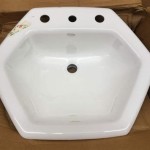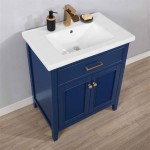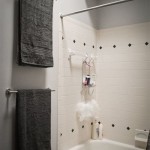How Often Should You Replace Your Bathroom Floor Tile Roof?
The lifespan of a bathroom floor tile roof is a multifaceted issue, dependent on several critical factors beyond a simple timeline. The term "bathroom floor tile roof" as used here refers to the material installed as the finished floor surface in a bathroom. Understanding these factors is crucial for homeowners to make informed decisions regarding maintenance, repairs, and eventual replacement. Premature or delayed replacement can lead to unnecessary expenses or potentially significant structural damage.
The typical lifespan of a bathroom floor tile roof can range considerably, from 10 to 20 years, or even longer. However, this is merely an average estimate. The actual duration is influenced by the type of tile used, the quality of installation, the level of maintenance performed, and the amount of foot traffic the bathroom experiences. Ignoring these factors can lead to a failure of the flooring system, potentially resulting in water damage and health hazards.
Tile Material and Durability
The type of tile used is a primary determinant of its longevity. Different tile materials possess varying degrees of durability, resistance to moisture, and susceptibility to wear and tear. Understanding these differences is essential when assessing the lifespan of a bathroom floor tile roof. Ceramic and porcelain tiles are among the most popular choices for bathrooms due to their inherent water resistance and durability. However, even within these categories, variations exist.
Porcelain tiles are generally denser and less porous than ceramic tiles, making them more resistant to water absorption and staining. This increased density translates to a longer lifespan, often exceeding 20 years with proper care. Ceramic tiles, while still a viable option, may exhibit signs of wear and tear, such as chipping or cracking, sooner than porcelain. Natural stone tiles, such as marble or granite, offer a luxurious aesthetic but require specialized maintenance and can be more susceptible to staining and etching. The lifespan of natural stone can be significant if properly sealed and maintained; however, neglecting these measures will shorten its lifespan considerably.
Vinyl tiles, including luxury vinyl tile (LVT) and sheet vinyl, are other common choices for bathroom flooring. Vinyl is water-resistant and relatively inexpensive, but its durability typically falls short of ceramic, porcelain, or natural stone. The lifespan of vinyl tiles can range from 5 to 15 years, depending on the quality of the material and the intensity of use. Furthermore, grout lines, even when using vinyl tiles that mimic tile appearance, can be a source of eventual degradation.
The type of grout used also plays a role in the lifespan of the tile roof. Epoxy grout, for example, is more resistant to staining and moisture absorption than cement-based grout. Choosing an appropriate grout can extend the life of the entire floor system by protecting the subfloor from water damage and minimizing the need for frequent cleaning and repairs. Regular cleaning and sealing of the grout are crucial to prevent deterioration and maintain its integrity.
Installation Quality and Subfloor Preparation
Even the highest quality tile will fail prematurely if improperly installed. The installation process is just as crucial, if not more so, than the material selection itself. Proper subfloor preparation is paramount for a successful and long-lasting bathroom floor tile roof. The subfloor must be level, clean, and structurally sound to provide a stable base for the tile. Any imperfections in the subfloor, such as cracks or unevenness, can lead to tile cracking and eventual failure.
If the subfloor is concrete, it should be properly cured and free of any debris or contaminants. If the subfloor is wood, it must be adequately supported and reinforced to prevent flexing or movement. A cement backer board, such as HardieBacker or Durock, is typically installed over the wood subfloor to provide a stable and water-resistant surface for the tile. This backer board helps to distribute weight evenly and prevent moisture from penetrating the wood subfloor, which can lead to rot and structural damage.
The quality of the mortar used to adhere the tile to the subfloor is also critical. The appropriate type of mortar should be selected based on the type of tile being used and the specific conditions of the bathroom environment. The mortar should be applied evenly and consistently to ensure proper adhesion and prevent voids that can weaken the tile installation. Grout application must also be done carefully, ensuring that the grout lines are completely filled and compacted. Leaving voids in the grout lines can allow water to penetrate the subfloor and cause damage.
Furthermore, adequate expansion joints should be incorporated into the tile installation to accommodate for movement due to temperature and humidity changes. These joints are typically filled with a flexible sealant to prevent cracking and buckling of the tile. Ignoring expansion joints can result in significant damage to the tile roof over time.
Maintenance and Usage Patterns
Regular maintenance is essential for extending the lifespan of a bathroom floor tile roof. Proper cleaning and sealing can help to protect the tile and grout from stains, moisture, and wear. The frequency of cleaning will depend on the amount of foot traffic and the type of tile used. High-traffic bathrooms will require more frequent cleaning than bathrooms used less often.
Ceramic and porcelain tiles are relatively easy to clean with mild soap and water. Natural stone tiles require specialized cleaning products that are designed to protect the stone from damage. Harsh cleaning chemicals, such as bleach or ammonia, should be avoided as they can damage the tile and grout. Regular sealing of the grout is crucial to prevent staining and moisture absorption. The frequency of sealing will depend on the type of grout used and the amount of exposure to water. Cement-based grout should be sealed at least once a year, while epoxy grout may require less frequent sealing.
The amount of foot traffic and the type of use the bathroom floor tile roof experiences will also affect its lifespan. Bathrooms used by multiple people or those with heavy foot traffic will experience more wear and tear than bathrooms used less frequently. Additionally, activities that can damage the tile, such as dropping heavy objects or wearing abrasive footwear, should be avoided. Placing mats or rugs in high-traffic areas can help to protect the tile from wear and tear. Addressing spills and leaks promptly is also essential to prevent water damage and staining.
Ignoring minor damage, such as small cracks or chips, can lead to more significant problems over time. These seemingly insignificant issues can allow water to penetrate the subfloor, leading to rot, mold growth, and structural damage. Addressing these issues promptly can prevent more costly repairs in the future. Small cracks or chips can often be repaired with epoxy or grout repair kits. However, more extensive damage may require replacing the affected tiles.
Signs that a bathroom floor tile roof needs replacement include widespread cracking, loose tiles, water damage, and mold growth. If the tile is severely damaged or the subfloor is compromised, replacement is the only viable option. Delaying replacement can lead to further damage and potentially hazardous conditions.
Ultimately, the lifespan of a bathroom floor tile roof is a culmination of factors, spanning material selection, installation quality, and homeowner maintenance practices. Understanding the interplay of these factors empowers homeowners to make informed decisions regarding the upkeep and potential replacement of their bathroom flooring.

How Often Should You Remodel Or Update Bathroom Firea Stone

How Long Do Clay Tile Roofs Last

How To Know When It S Time Replace Your Flooring

How Often Should You Update Your Bathroom Big

How To Upgrade Bathroom Tile Without Replacing

Why Ed Tiles In Your Bathroom Are A Problem Shower Sealed

Tile Floor Replacement Vs Repair What You Should Know

Best Bathroom Flooring Options Forbes Home

All You Need To Know About Tiling A Roof Buildworld

How Long Do Terracotta Roofs Last







